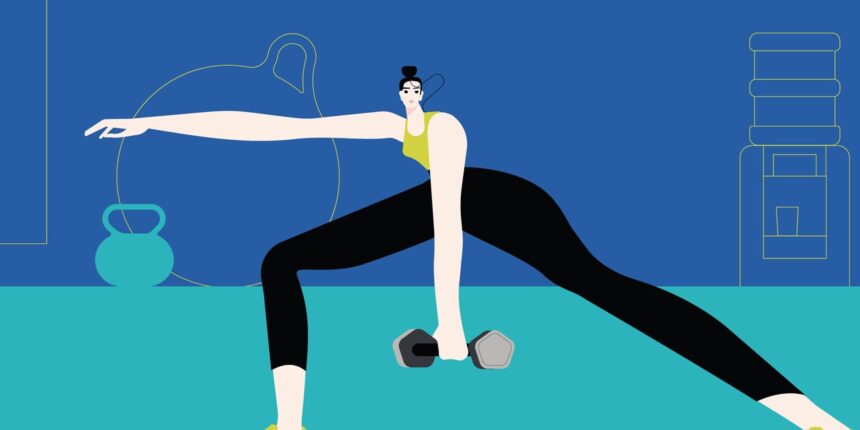If you love to switch it up with different fitness classes, you’re probably going to get bored with a gym that offers the same handful on repeat—but you just might love one that works in new additions every month. If the goal of your fitness plan is to build endurance to finally crush a 10K, you’re likely going to get frustrated with a space that has only a handful of treadmills that are always in use. But one with cardio machines as far as the eye can see? That might make a great new home for you.
Just be wary of gyms boasting tons of shiny new amenities that sound cool in theory but really don’t do it for you. If it’s a feature you think you should want—Pilates Reformer classes included in your membership, for instance, and you’re a barbell lifter through and through—but you don’t see yourself actually using it, try not to let that overwhelm your other criteria.
3. When do you want to work out?
This is a big one, because it has a trickle down effect on lots of other factors. A gym that’s annoying to get to during rush hour might be just fine during the day. One made up mostly of professionals might be packed in the after-work hours, while another one that caters to the retiree crowd may clear out well before 5 p.m. You can ask the front desk folks when the busy times are, but this is another one where you’ll get the best info by doing a trial run yourself.
Another thing to keep in mind regarding timing: Do you intend to go right to work after your workout, straight to brunch, etc.? If that’s the case, the locker room situation is going to be more important than if you’re only stashing your coat there. Which brings me to:
4. Will you be showering?
Not all gyms—even the ones that look fancy on the floor—are created equal behind closed doors. And by that I mean the bathroom door. Some spaces have showers, vanities, and even complimentary toiletries that make your regular ol’ GRWM routine at home pale in comparison. Others will have you dousing your foot in rubbing alcohol if you accidentally step off your flip-fop onto the bare shower floor.
Relatedly, towel service: One of the pushes in favor of my current gym was the fact that I never have to worry about bringing my own, washing it, stuffing it in a gym bag, etc. Freeing up that mental load is well worth the extra cost of this amenity, and it’s one I’d encourage you to consider as well. After all, it makes you more likely to actually use the showers, which can greatly improve your post-workout comfort. (Once you’ve stepped into the cold January air after a hard interval run sans shower and immediately got the chills, you’ll see what I mean.)
5. Are you a headphones-in exerciser or do you prefer a little chat?
I’ve been to gyms where groups form on the floor, folks chat each other up, and a spotter is always a nod away. I’ve also belonged to ones where everyone does their own thing. Neither is better or worse, but if there’s a vibes mismatch with what you prefer, it can seriously impede your enjoyment—and thus your likelihood to keep coming back. So when you check out your potential place, keep an eye on how much interaction is going on (and gauge your gut reaction to it).
6. Where’s the nearest spray bottle or container of wipes?
If neither of these are hitting you right in the face, it’s not a good sign for the overall cleanliness of the place. If gym-goers have to traipse the floor to snag the one singular bottle of spray cleaner off the front desk to wipe down their bench, you can probably guess pretty accurately that most of the equipment isn’t being sanitized between uses. It’s unfortunate, but as I’ve noticed firsthand, a lot of folks aren’t going to expend the extra effort to clean up. If there’s a bottle, roll of paper towels, or container of wipes near every station? You can be better assured that a spritz and swipe will occur, and that you’re not going to sink right into someone’s back sweat when you hit the mat.
7. Does the place exemplify the kind of fitness you want it to?
Another thing to keep in mind when checking the place out: Do you see a lot of different kinds of bodies represented, whether we’re talking about the class instructors or even other gym-goers? Is the fitness equipment made for lighter (or taller) bodies, or can it work for a wider array of users? Is the messaging on track with how you view fitness?
Read the full article here



